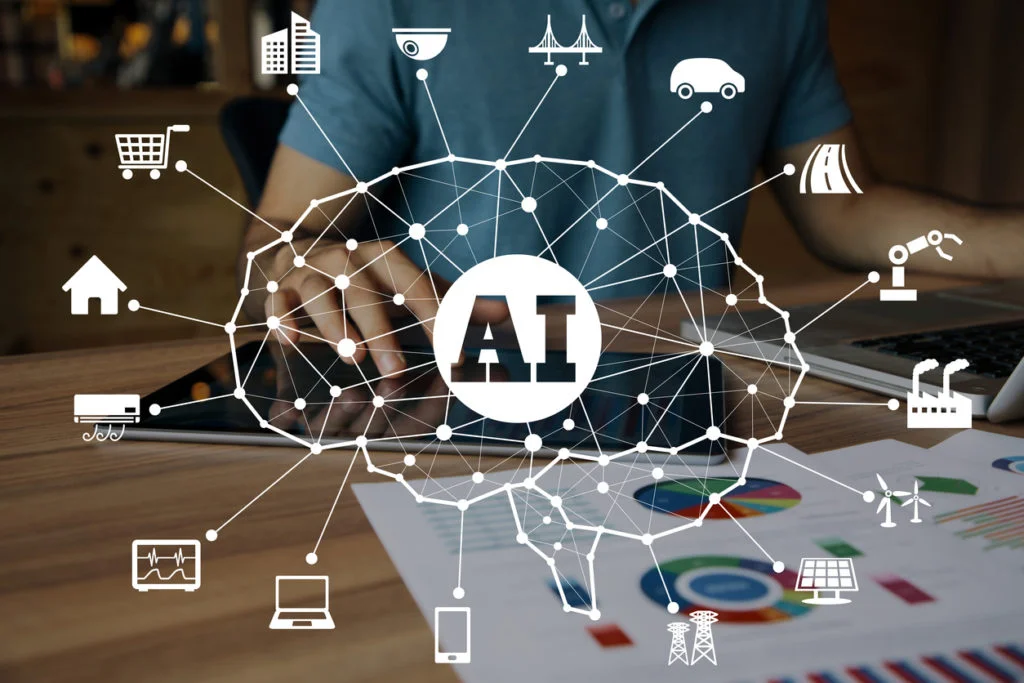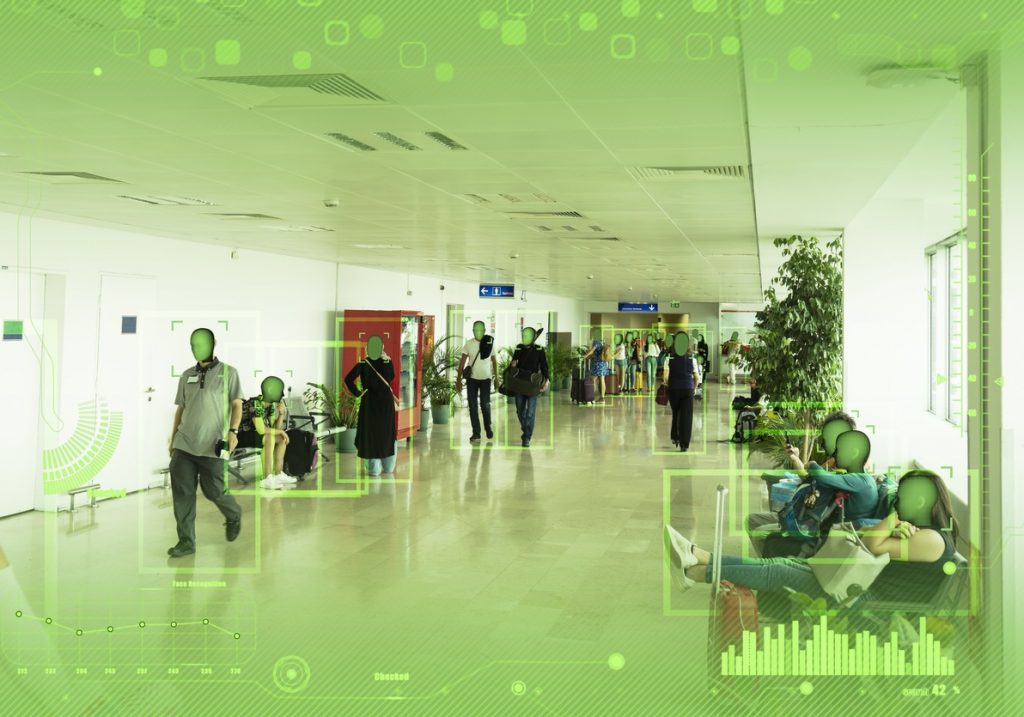Contrary to popular belief, brick-and-mortar stores aren’t going anywhere anytime soon. This is not an empty claim but one backed by research. According to Euromonitor International, more than 80% of all goods purchases globally in 2022 will be in-store. This means that e-commerce won’t trump the in-store experience anytime soon.
However, what is likely to happen in the future is the increased digitization of the retail industry. This includes not just the use of sophisticated technology to boost the in-store experience but also the use of technological advances to revolutionize the e-commerce store and the retail supply chain.
When we talk about technological advances in retail, there is not one but several sophisticated technologies that are promising to forever change the face of the retail industry. These technologies include mobile, IOT, and AI to name a few. While these technologies are interconnected to each other in some way or the other, the one technology that holds the most potential for revolutionizing the retail industry is artificial intelligence (AI).
Why have we picked AI? Because 85% of all customer interactions in retail by 2020 will be managed by artificial intelligence. With only a year left to 2020, it would be careless of us to not think about how AI is likely to impact retail, not just in terms of customer experience, but also other aspects that make this experience possible.
If you’re thinking how big of an impact will AI make in retail in the future, then you should know that the spending on AI by retailers in 2022 is expected to exceed $7 billion. This is 5 billion more than the amount spent last year. AI will only grow over the years as the use of the technology for personalization and productivity are expected to help the AI market reach $15.7 trillion by 2030. So, how will AI reach such heights in a decade’s time? It will reach them by bringing the following 12 improvements to the retail industry.
1. Increase Online Customer Conversion with Personalized Recommendations
By studying the behavior of customers, AI can make intelligent personalized recommendations to consumers. To the surprise of many, the recommendations made by AI to consumers are incredibly accurate. To make these accurate recommendations, AI looks at the data that it collects and analyzes over time to understand what customers might be interested in.
With AI technology, retailers can learn a lot about the preferences and purchases of customers using the data collected. By allowing them to target product advertisements or marketing campaigns, AI can help retailers to maximize their cart value to increase customer conversion and sales.
AI makes it possible for retailers to see shopping patterns in search trends and online browsing. This allows the retailers to not sell targeted products to customers, but also customize their offerings based on customer preferences.
A real-world example of this is Walmart, the American retail giant, that uses artificial intelligence (AI) to recommend products on its website based on past behaviors of customers. Based on these insights, Walmart looks to provide a personalized shopping experience to ensure a high level of customer satisfaction and engagement.
Another company that uses has successfully used AI to make recommendations to customers is Amazon, which gets 35% of product sales from its recommendation engine. This only proves the value of using intelligent technology such as AI to make personalized recommendations to customers online.
2. Improve Customer Shopping Experience with Chatbots
One of the most popular AI application in the retail industry chatbots or AI-enabled voice assistants. With the evolution of machine learning models and algorithms, AI assistants such as Google assistant, Apple’s Siri, and Amazon Alexa have become increasingly mature. This has enabled the AI chatbots to assist customers at self-checkouts, trial rooms, and shelves. More importantly, they are helping to improve the shopping experience for customers by having a one-on-one conversation with them.
In addition to improving the in-store experience, AI chatbots are also helping to make online shopping experiences better. They are doing this by notifying customers about new products/items, helping them find items on the site, and offer them products similar to what they’ve already chosen.
The use of AI chatbots to improve customer shopping is not a novelty. Instead, it is something 80% of the brands worldwide are doing. One such brand is 1-800 Flowers that uses its AI-enabled chatbot/virtual assistant Gwyn to respond to customers, help them find the best items, and assist them throughout the shopping experience.
3. Improve Supply Chain Operations
With AI, retailers can avoid shortages by better predict the demand for different product categories. With AI-enabled RFID tags installed in the warehouse and other supply-chain related systems, retailers can analyze various events such as weathers patterns, fashion trends, and customer behavior in real time. This, in turn, allows retailers to make informed decisions to improve their supply chain management.
A fashion retail company’s product sales prediction process got a major accuracy boost by using the software developed by Achievion. The platform improved company operations by a significant margin.
Additionally, since AI offers 100% accuracy in inventory, retailers can benefit greatly by automating each aspect of their inventory management. Otto, an online retailer based in Germany, uses AI to predict with 90% accuracy what will sell within the coming 30 days. This allows the retailer to make accurate purchase decisions.
Otto says that it has reduced excess stock in its stores by almost 50% since it started using AI technology. The increased accuracy in inventory means that Otto now makes two hundred thousand purchases from third-party suppliers each month using its AI system and without any human intervention.
4. Try on the Product Virtually Before Purchasing
With AI and AR-based mobile apps, customers can visualize how an item would look on them or how it would fit into their office or home. Today, augmented reality (AR) in retail is seen as a necessity rather than an option. This is because 75% of customers expect retailers to offer the AR experience.
With this in mind, retailers across several industries have already integrated AR into their in-store experience. The best examples of this are Google’s ARCore and Apple’s ARKit. Another company that is using AR to enhance the customer experience is cosmetics giant Sephora. The company offers real-time facial recognition through its app to boost AR shopping. The AI/AR technology integrated into Sephora’s app allows users to see how a cosmetic item will look on them before they actually apply the makeup to their face. Other applications of AR in retail include apps to visualize products at home and virtual fitting rooms.
5. Speed Up Checkout and Reduce Staffing with Cashier-Less Checkout
By scanning products automatically as they come through on conveyor belt, intelligent checkout stations powered by AI can increase checkout speed by minimizing the need for cashiers. With the robotization of their outlets, retailers can eliminate lines at the counter. This will help them to minimize the number of employees needed at the store, which will reduce operational costs and have a positive impact on the bottom line.
Perhaps, the best example we have of cashier-less checkout in the real world is Amazon Go, a grocery store operated by Amazon. Amazon Go is partially automated to allow customers to walk into the store, pick up the desired item, and leave without checking out or making a payment at a physical counter. This is also made possible by artificial intelligence (AI) technology. Currently, there are only a few Amazon Go stores. However, Amazon has plans to expand Amazon Go to three thousand stores across the U.S by 2021.
6. Prevent Theft and Improve Security
Attempts of theft can be automatically recognized by AI-powered cameras to notify personnel. This can help to thwart the robbery attempt and prevent loss of inventory. An example of this is the use of AI-enabled cameras by Amazon to reduce checkout theft in 1000 of its stores. AI-based surveillance systems have helped the retail giant to minimize loss of inventory causes not just by theft but also by fraud, wastages, and scanning errors.
A good example of the AI-powered software from this category is the platform for analyzing foot traffic patterns in retail stores and malls built by Achievion. It was deployed to several shopping malls and produced a multitude of insightful data points about visitors. This information allowed individual store owners to deliver personalized offerings to their clients and achieve higher retention rates.
7. Eliminate Overstocks and Out-of-Stocks
According to estimates, the impact to the bottom line of retailers worldwide of product supply excess or shortage is $1.1 trillion each year. Excess stock can lead to low sales turnover while supply shortage or situations where a retailer is out-of-stock can leave the customer dissatisfied and sometimes angry, causing them to switch to a competitor.
No retailer wants this and thus some companies have started to use AI to predict and minimize/eliminate situations where they have an excess or shortage of stocks. An example of this is H&M, the multinational clothing brand, that uses AI technology to analyze store receipts, returns, and loyalty cards. This allows the company to make accurate predictions about the future demand for accessories and apparel. As a result, H&M retailer is able to better manage inventory and avoid overstocks and out-of-stocks.
8. Automatically Adjust Prices to Increase Sales
With the help of AI, retailers can come up with the best pricing strategies to acquire more customers, offer the best deals, and increase sales. AI technology can help to prepare retailers better for the impact of current and future tariffs.
Until now, tariffs have cost individual households in the U.S $167 a year. This is because of their impact on imported goods worth $250 billion. In order to survive these tariffs, retailers will have to understand how price changes will impact customers. This will allow them to improve predictions about what customers can and are willing to absorb in terms of pricing.
With AI, retailers can tap into insights from historical data relating to demand levels, weather, competitor pricing, and customer buying behavior. This can help them to make better predictions about future customer and market behavior and then come up with pricing strategies based on that.
With AI-powered forecasting tools, retailers can keep an eye on the changes in the market to adjust pricing according to the demand and wishes of the customers. A company that is already using artificial intelligence (AI) technology for price optimization is Kroger.
9. Search for Products Based on Image
Thanks to AI technology, consumers can now search for products based on images. In other words, they can use images to search for products online. Some of the companies that have already experimented with this technology to allow shoppers to find products in their online stores are CamFind, Tagalys, and YNAP, the Italian online retailer.
People visiting their sites can find products by simply uploading images similar to the products they’re looking for. Another real-world example of the use of image recognition technology in retail is Cortexica, an AI company based in London.
10. Track Customer Satisfaction Intelligently
With AI technology, retailers can now detect the actual mood of their in-store customers. Walmart is already using facial recognition technology for this purpose. The AI-based facial recognition technology allows Walmart to determine the customer satisfaction level at the checkout.
If frustrated customers are detected at the checkout, then a customer representative is alerted to talk to them, pacify them, and revive the in-store relationship. Another company that is using AI technology to track customer satisfaction is Shop Direct, the UK-based online retailer and financial services providers that have partnered with IBM to develop AI-powered assistants that can detect customers’ moods.
11. Streamline Processes and Document Management
AI can help streamlines processes and document management for retailers by automating data entry, sourcing of information from unstructured sources, and the processing of handwritten and paper documentation.
What is the outcome of this? More time for back-office employees to focus on delivering complicated tasks better. AI promises to not just change but also revolutionize how documents are stored, managed, and searched for in the retail industry. A good example of this is Google’s new AI tools that scan documents, search for products, and take calls.
12. Identify the Best Supplier Match for the Various Product Lines
With AI technology, retailers can improve the selection of suppliers for their various product lines. This is because AI can identify the best supplier match for each product category based on machine learning and data analysis.
A real-world example of AI’s use in identifying the best supplier for a particular product is Scoutbee, a company that develops and provides access to a unique AI-based supplier discovery platform. The platform has so far raised $12 million for Scoutbee by matching companies with suppliers.
Final Word
AI looks all set to revolutionize the retail sector in the coming months, years, and decades by bringing significant improvements to the industry. These improvements including, but are not limited to, the use cases of AI in retail mentioned above.
At Achievion, we can build AI software and apps to help retailers worldwide bring the above-mentioned improvements to their business and grow.









